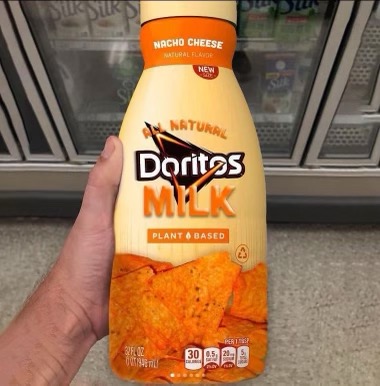

Most EVs actually play sounds already. Just older ones wouldn’t now. My brother set his to a spaceship sound. But you can pick normal sounds too, like various style ICE engine sounds.


Most EVs actually play sounds already. Just older ones wouldn’t now. My brother set his to a spaceship sound. But you can pick normal sounds too, like various style ICE engine sounds.


Nowadays, it is exactly as complex as it sounds. There is a ton of blending, pitch and playrate tweaking, separate modifiers for current rpm and how much the accelerator is currently depressed. And yeah, like hundreds of recorded samples from the real car when possible, or a similar sounding car when not possible.
We are probably on the verge of getting to a point where a rough simulation might soon be able to take over for this process. It won’t sound as good for a while still, but it will be cheaper and faster soon. And as time goes on, it’ll get close enough to sounding right while continuing to decrease in cost and time taken to a point where it’ll be the only way to do it eventually


Well, you got the answers you were looking for, here is a different answer. To your other implied question, how to not worry about dust getting in other holes.
Main thing is to develop positive air pressure. You want more powered intake than powered exhaust.
Use fans for all your filtered air intakes, ignore powered air exhaust, run it at lower fan speeds if you can. Air will get out fine. If you force the air in where you want it to go in, dust will only go into the easily removable filters, it won’t be on your components. Any extra hole in the case will just be exhausting the already filtered air. Then just remember to actually check and clean your filters. That’s the hard part. But if you clean them when they need to be cleaned, you will never have to actually clean the inside or the fans or components or anything else, just the filters.


Hmm, I guess I must have already blocked a decent amount of the places the negative stuff is coming from. I still use /all and I have a pretty good mix of positive stuff and the other stuff.


You can set Virtual Desktop to use them as either an xbox or playstation controller. It’s a 20 dollar program, but I would consider it a mandatory part of any VR setup, factor it in to the total price. But I really recommend a new headset, Quest 2 and Quest 3 were both huge leaps. Quest 3 is clear enough that a 4k virtual screen looks much better than a 1440p screen in it. Even though it shouldn’t have enough pixels for that to be the case, in practice the sort of temporal anti aliasing you get just from the micro-movements of your head is enough to make it the case. Going from 1 to 3 with no in-between would be nuts. For now though, Quest 1 controls can indeed be used that way.


VR is done with a controller for each hand. Nice to play old emulated games on a virtual 4k screen set up wherever you want at any given moment, any size and distance. There are regular olden days style flat screen emulators, but also a few systems have full VR emulators too, they convert the games into 3D, either immersive first person or diorama mode. There is also a 3DS emulator in VR so you can play 3DS games in perfect 3D and instead of 400x240(240p), you can play in 1080p or more. And if you missed out and are curious about Nintendo’s Virtual Boy, of course there are VR emulators for that. There were some pretty cool games, and now they don’t have to only be in various shades of red. You can pick which color they are various shades of. And there is a project currently in the works to colorize each game properly instead, as an overlay.
Can also play while laying down and put the screen on your roof. Or play while a passenger in a car, bus, train, plane.
And with VR, hand motions are 1 to 1, no waggles, but also no exaggeration. You move your hand exactly how you want to swing your racket, or sword, or staff. People have gotten pretty creative with spell casting in various games.
But yeah, great way to play wii games. Especially the ones that supported wii motion plus. Wii is one of the systems where you can choose to play in VR, not just flat screen. Gamecube too, cuz same emulator.


The things he’s eating often didn’t eat any meat. Hehe.
I don’t know what they mean about firefox breaking, unless they are on the nightly stream. I don’t recommend being on nightlies if stability is important to you.


And, you’d want/need redundancy. One on-site back up for quick restoration and one off-site for surviving physical disaster. So, you’d need at least 3 times that. In HDD prices, that is roughly 2.5 million per set-up, or 7.5 million total for all three. And in SSD prices, well it’s about 3x that. 7.5 million per set up and 22.5million for all three.
An alternate option is a distributed back-up. They could have people volunteer to store and host like 10 gigs each, and just hand out each 10 gig chunk to 10 different people. That would take alot of work to set up, but it would be alot safer. And there are already programs/systems like that to model after. 10 gigs is just an example, might be more successful or even more possible in chunks of 1-2 terabytes. Basically one full hard drive per volunteer.
Lol, had to add that after doing the math for 10 gigs to ten people and realising that was 1000 people per terabyte, so would take 150 million volunteers. Even at 2 petabytes each, assuming we still wanted 10x redundancy in that model, it would be like 750 thousand volunteers or something like that. Maybe there is no sustainable volunteer driven model, lol.
Well, I guess I recommend therapy then, it sounds like it might be different from what you expect it to be. You might enjoy it.
Mental healing/therapy.


If you get stymied at any step, let me know. I think it’s pretty accessible, but I’ve been doing this sort of stuff for decades, so it’s hard for me to judge accurately.


I do have a fold 4, and can say it’s decent as a 2DS, but it was 1200 dollars. A Quest 3 with Citra VR is 3DS, not just 2DS, for 500 dollars. Full functionality. Smooth 1080p on most games, higher on some, lower on others. You can set the 3D depth, also there is a fun option of playing some games in first person 360° immersive VR. Kind of fun to be able to “exist” inside the world of the games you played as a kid, or… younger adult… or in some cases the games your parents played and showed you when you got old enough to want a portable device, but young enough that your parents wanted it to be something cheap and durable.
Footnote: Using the d-pad in Citra VR is not obvious, just place your thumb on the rest pad of either controller and the other controllers joystick becomes the d-pad. It’s not as complicated as it sounds, it feels pretty intuitive once you do it a couple times.


But Citra VR came out for Quest 3… Playing 3DS in 3D, at 1080p for 500$ all-in. And the screens can be whatever size you want and wherever you want. You could put it 20 feet away and through a wall if need be. The eyes love when stuff is 20 feet away, very comfortable.
And before it was available as stand alone on the Quest 3, it was available on PCVR, with any computer strong enough to run the emulator. Which could be similarly pretty cheap. Like a raspberry pi or some such device.
It is also technically available on Quest 2, but you’d have to go lower than 1080p on most games. But still higher than native. Native was 400x240 for the 3D screen. But Quest 2 lowers the all-in price to like 300 dollars. Assuming you are buying new. Used would be cheaper.


They just wanted to head off anyone assuming that, due to adding support for other platforms. And leave it open in case lemmy tanks in some way at some point. All we can know is our current intentions, we can’t know what our intentions will be if things change in the future. We can guess, but only so accurately.


Orna indeed. Basically final fantasy go. But like a good one, not the actual recent final fantasy phone games.


Simply, when air is heated, it expands. Where does it go when it expands? Whichever direction has the least resistance. That is largely what differing levels of air pressure are. And why we can predict where the air is going to move and how fast. The main thing that determines air pressure is temperature, but there are other complicating factors too. Mountains of course dramatically alter the overall compressibility of air trying to be pushed in their direction. Same with large cities.
Most of the heating of air comes from where on earth is currently lit by the sun, but of course there are also other complicating factors. The suns rays don’t directly heat air much, they mostly pass through it of course. But the suns rays heat the more solid objects they eventually touch and those solid objects can spread that heat into the surrounding air. So the heat is dispersed into the air unevenly, depending on what is being heated by the sun in that location. And then of course also the other sources of heat, like the heat coming from the core of the planet, and man-made sources of heat. Both relatively tiny, but factors none-the-less, especially on local-scale weather patterns.
It’s pretty complex overall, but also pretty simple if you don’t need huge amounts of accuracy.


Lol, that is not at all the intended use case. But good on them for simplifying the process, I guess. The point, of course, is to cook them on separate sheets, but at the same temperature for the same time. So one use of the oven for both supper and dessert.
But, now I kind of want to try it.


The only thing they did wrong was having the key dumping info associated with them. Nothing else needed to have been done different. Without that, they would have been completely legal. Dumping roms is totally fine.
You want people to know it was you that did all this technically impressive work and problem solving. Had they not done that one thing, they would have been fine putting their names on their work.
Yeah, on most models made in the last 5 years or so. Specifically for people with vision or partial hearing loss. But of course the ones that make fake engine sounds are also largely for the specific drivers those EVs are targetted at. They also tend to play them inside the cabin too. The fake engine sounds are pretty terrible though, like videogames from 20+ years ago.